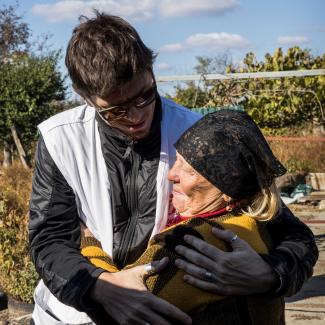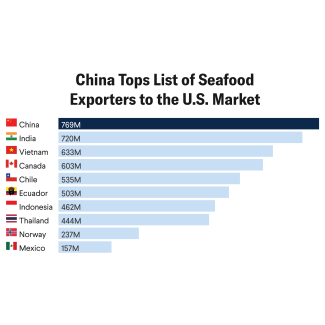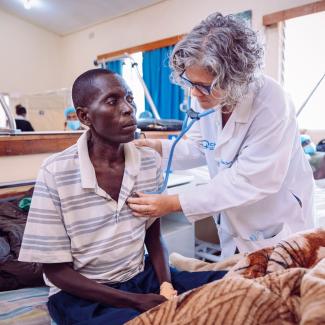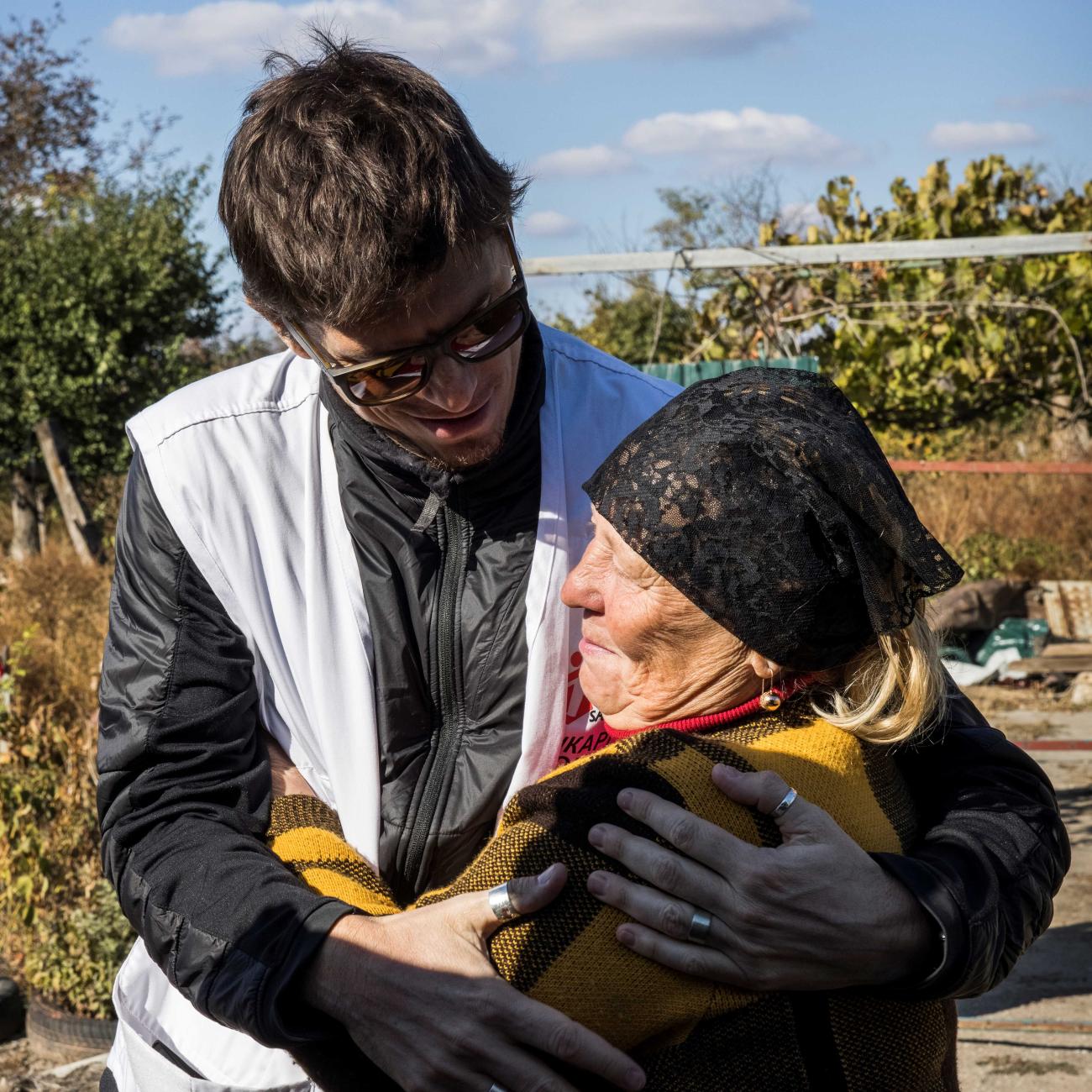A recent human case of bird flu in Missouri—one without an obvious path of exposure to the virus that led to a hospitalization—has prompted scrutiny into the U.S. government's response to this year's outbreak in dairy cattle.
On Friday, the U.S. Centers for Disease Control and Prevention (CDC) revealed that a person living with the patient had also become ill around the same time but was not tested—raising the possibility of a human-to-human outbreak.
Epidemiologist Michael Osterholm, who has special insight into the danger this would pose to public health, says he's not surprised. He recalls offshoot human cases with H3N2, another variant influenza virus that infects pigs. What would be concerning, he says, is confirmed person-to-person transmission.
Osterholm has spent his life tracking viruses and trying to strengthen public preparedness for them—during a career spanning Minnesota's Department of Health, an interim management team that led the CDC, and an appointment in 2020 to President Joe Biden's COVID-19 Advisory Board. Currently, he is the Regents Professor and McKnight Presidential Endowed Chair in Public Health at the University of Minnesota.
Osterholm also directs the university's Center for Infectious Disease Research and Policy, where he helps oversee the influenza vaccine and coronavirus vaccine roadmaps. He describes these projects as "one-stop shopping locations" for all information about what's already happening and what more needs to be done to create truly game-changing universal vaccines.
Think Global Health interviewed Osterholm about gaps in vaccine development and manufacturing, public health failures surrounding H5N1, and the certainty of the next pandemic. He and his colleagues' findings show that critical milestones are still far from being met but could nonetheless be within grasp, should we choose to pursue them.
□ □ □ □ □ □ □ □ □ □ □ □ □ □ □
Think Global Health: You've dedicated much of your time recently to advocating for universal influenza and coronavirus vaccines. What would that look like, and are there signs that such vaccines could actually be developed?
Osterholm: The current vaccines that we have for both influenza and coronavirus are good vaccines—but they're not great. They can reduce serious illness, hospitalizations, and deaths. But protection has a decidedly limited duration, and even if someone gets vaccinated, they could still get infected and transmit the virus.
The CDC has been really challenged here because public health by its very nature is a voluntary activity
The best of all scenarios would be what we call a game-changer universal vaccine that creates a broad immune response that covers a wide range of flus or coronaviruses. We also want much more durable protection, so we're not doing annual immunizations or immediate immunization of the new vaccine for an emerging pandemic.
We are moving toward that, but the investment in it is incredibly limited relative to the actual payback. There will be another influenza pandemic, and there will be another coronavirus pandemic—and the ones that come later could be much worse than anything we saw with COVID-19.
This is where we really have to ask ourselves, are we being pennywise and pound foolish?
Think Global Health: You recently asserted in a Foreign Affairs article that the world is not ready for the next pandemic. Can you summarize your argument?
Osterholm: The bottom line is that we all focus on how long it takes to develop a vaccine to address a specific emerging pandemic. That's less of a question for me. Instead, I want to know how long it takes to get the last dose of the vaccine.
If we develop a vaccine within six to 10 months but can't get most people vaccinated for several years because we don't have the manufacturing capacity, that paints a very different picture.
Right now, we don't have the capacity to manufacture vaccines at the levels we would need to respond to a pandemic.
Think Global Health: What accounts for that manufacturing bottleneck?
Osterholm: Vaccine research and discovery along with manufacturing are often at the private-sector level. If I'm a pharmaceutical company and I make vaccines, but I need to have capacity to make a lot more of it within a short time, who's going to pay for it?
That capacity requires a sizable investment in capital. You have to have experts who are there day in and day out, ready to go at a moment's notice, but there's no business model for that.
Think Global Health: Are you seeing any specific pandemic preparedness failures playing out in the current H5N1 bird flu outbreak in cattle in the United States?
Osterholm: This situation is causing everyone in public health to ask whether the system in place right now can really protect us from a potential emerging pandemic in the future. I would largely say that system will give us a shout-out that a pandemic is coming—but I'm not sure that it will do anything else to really protect us.
For example, if you look at our capacity today to make flu vaccines that are not even great, just good, we're talking about having basically the same capacity as we had in 2009 with H1N1.
Most of the vaccine back then didn't arrive until more than eight months after the pandemic began, and it took almost two years to get most people vaccinated, by which time the virus had gone through the population.
Think Global Health: How concerned are you about the specific risk H5N1 poses to cattle?
Osterholm: We don't really understand yet what's happening with H5N1. We've been dealing with this since April, but big questions remain about how much infection is in cattle and why it continues to spread within farms. This has been a real challenge because the dairy industry has largely not been helpful. They have basically not given permission for testing milk from their farms. For example, we just had eight new farms confirm infections in California, and we have no idea how that happened because no one has allowed testing.
Think Global Health: What are your thoughts on how well the CDC is doing in all of this?
Osterholm: It's fair to say that this has not gone all that well relative to the kind of public health action we need. But a large part of that is due not to the inadequacies of the public health agencies, at either the federal or the state level, but to agriculture's unwillingness to collaborate and cooperate.
We don't know whether this is going to become a serious threat to human public health
The CDC has been really challenged here because public health by its very nature is a voluntary activity. What we would like to see being done are routine sampling of farms around the country to understand how much we're currently missing in terms of new infections.
But if farms refuse to cooperate, there's not much public health workers can do.
Think Global Health: Do you think the risk that H5N1 poses to people has been overblown so far?
Osterholm: I don't think it's overblown. Again, I think the problem we have is that we just don't know.
I don't see any signs right now suggesting that this is going to become a human pathogen transmitted to people by people. On the other hand, all it would take is one reassortment.
We now know that cow udders actually have receptor sites for both the bird viruses and the human viruses. If cows get coinfected, the viruses could get together and swap out genetic material and create a new virus that could be the cause of the next pandemic.
That could happen tomorrow. So I don't think you can say we've overreacted at all. But we also have to be honest and say we don't know whether this is going to become a serious threat to human public health.
Think Global Health: Any predictions about what this fall might bring for H5N1?
Osterholm: Niels Bohr, the famous physicist from World War II, once said that predictions are very difficult, particularly about the future. The only thing I can tell you is that we're going to see more pandemics of influenza and coronaviruses.
Beyond that, none of us can tell you what that means—other than we've got to be ready.




